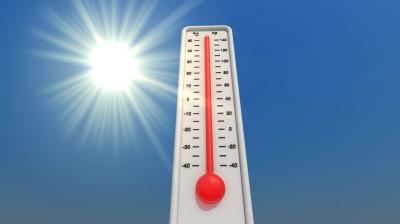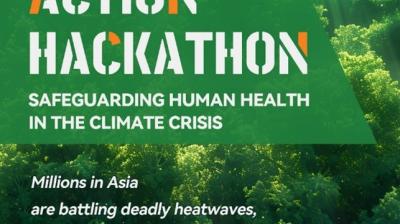WMO issues new guidelines on evaluation of weather and climate extremes
WMO has taken over responsibility for hosting the official Archive of Weather and Climate Extremes - the equivalent of the Guiness Book of records on heat, rainfall, wind, lightning and many other phenomena. It has also issued new guidelines on the evaluation of new records.

Knowledge of weather and climate extremes is critically important, not only for climate science, but also for practical purposes. For example, when designing a building or a bridge, it is essential to know, based on past observations, how fast the wind speeds in a given geographical area could actually reach.
Similar concerns exist with respect to air temperature and other meteorological variables. How hot could air temperatures reach in a given location? How cold? Human bodies function within a specific range of environmental conditions and the World Weather and Climate Extremes Archive contribute to establish the limits of those conditions in a certain region.
The evaluation of weather and climate extremes is also relevant to the advancement of basic atmospheric science: as climate changes, extreme values provide critical information regarding shifts in the ranges of climate indicators.
“Improving the understanding and characterization of extreme weather and climate events is crucial to support disaster risk reduction and the ongoing international Early Warnings for All initiative. This is of paramount importance in a changing climate where many weather and climate extremes are increasing in frequency and intensity, with disproportionately high impacts,” says WMO’s Chief of Climate Monitoring, Dr Omar Baddour.
“In addition, human beings are, in general, fascinated by weather; in particular, they are interested in weather extremes – the hottest, the coldest, the windiest, and so on. Having a reliable list of these extremes can help to foster people’s interest in weather. Official and accessible records of weather extremes can help the media put weather events in proper perspective,” says Dr Baddour.
Archive of official records
The origin of the Weather and Climate Extremes Archive dates back to 2007 and has been spearheaded by Prof. Randall Cerveny at Arizona State University and WMO’s former Commission on Climatology. It logs the official records of global, hemispheric and regional extremes associated with a number of specific types of weather.
A weather or climate record is the most extreme value so far known for a weather or climate variable in a given geographical area, such as the highest or lowest temperature so far recorded globally or in a specific region, country or geographical domain of interest.
“The Archive provides historical and geographical perspectives of observed limits of extreme weather and climate events. It is a living source of information for understanding climate variability and change and climate change detection and attribution and for construction, energy, industrial and other applications,” says Prof. Cerveny, WMO’s Rapporteur on Weather and Climate Extremes.
At present, the Archive lists extremes for air temperature, atmospheric pressure, precipitation, hail, wind, and lightning, as well as two specific types of storms – tornadoes and tropical cyclones, and ocean wave height. Preserving the climate memory cannot be done adequately without archiving information about record extremes over time.
”The WMO evaluation and adjudication of potential extreme records has become a victim of its own success. It took years for people both within and external to WMO to look to the Organization as the official arbiter for such Records. However, once they did, more and more scientists, journalists, meteorologists, lay weather enthusiasts, as well as official regional and National Meteorological and Hydrological Services requested that more and more extremes be evaluated – and requested that they be evaluated more and more quickly,” says Prof. Cerveny.
The new guidelines describe the process for evaluating and verifying a weather or climate record, including what is involved in the evaluations and how decisions are made, who leads the process and how additional experts are selected, the scientific and measurement challenges, and the importance of collaborating with national meteorological authorities and international climate experts in the verification of new records.
An observation which is a potential new record is likely to receive considerable attention as soon as it is known. Unfortunately, the formal evaluation by a WMO committee is a lengthy process which often takes one to two years for a final result. In order to provide an assessment more quickly, a process for the provisional acceptance (or rejection) of a potential record is needed to determine whether it is credible.
It is recommended that the provisional assessment be led by the responsible NMHS, although that NMHS may seek advice from WMO as necessary. (In some cases, it will be WMO which alerts the NMHS that a potential Record has been set on its territory.) It is important that this process carry some level of authority.
WMO policy-making support
WMO supports the United Framework Convention on Climate Change (UNFCCC) process by providing governments with the latest scientific advice and information, including the most current information on the state of the climate. These reports have an important section relating to extreme weather events, prepared using data collected from Members.
The publication of the present Guidelines for the WMO Evaluation of Records of Weather and Climate Extremes, and ensuring that the World Weather and Climate Extremes Archive is up to date further reflect WMO’s commitment to supporting climate policies with scientifically based climate information.










